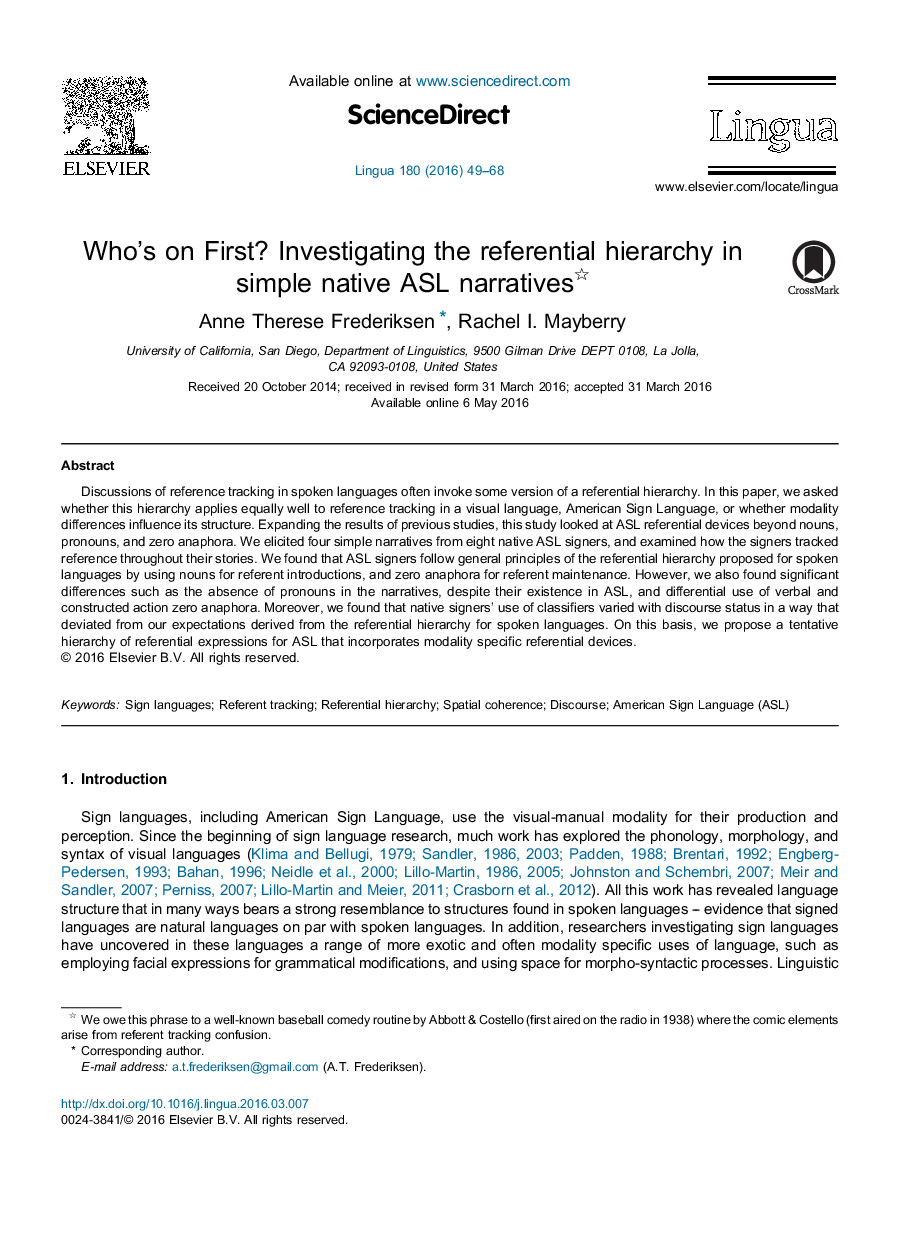| Article ID | Journal | Published Year | Pages | File Type |
|---|---|---|---|---|
| 935233 | Lingua | 2016 | 20 Pages |
•We examined referent introduction/maintenance/reintroduction in 32 ASL stories.•Participants used nouns for introducing, zero anaphora for maintaining referents.•Participants generally avoided pronouns and never used classifiers for reintroducing referents.•We found great variety in zero anaphora types as a function of discourse status.•We propose an ASL referential hierarchy emphasizing modality specific strategies.
Discussions of reference tracking in spoken languages often invoke some version of a referential hierarchy. In this paper, we asked whether this hierarchy applies equally well to reference tracking in a visual language, American Sign Language, or whether modality differences influence its structure. Expanding the results of previous studies, this study looked at ASL referential devices beyond nouns, pronouns, and zero anaphora. We elicited four simple narratives from eight native ASL signers, and examined how the signers tracked reference throughout their stories. We found that ASL signers follow general principles of the referential hierarchy proposed for spoken languages by using nouns for referent introductions, and zero anaphora for referent maintenance. However, we also found significant differences such as the absence of pronouns in the narratives, despite their existence in ASL, and differential use of verbal and constructed action zero anaphora. Moreover, we found that native signers’ use of classifiers varied with discourse status in a way that deviated from our expectations derived from the referential hierarchy for spoken languages. On this basis, we propose a tentative hierarchy of referential expressions for ASL that incorporates modality specific referential devices.
